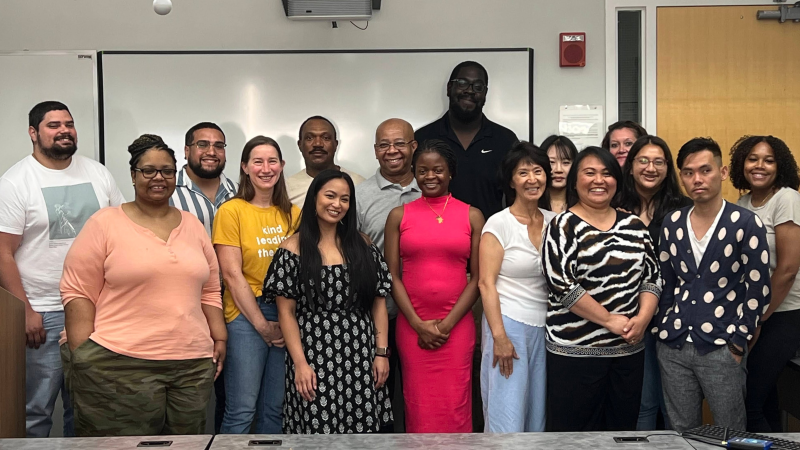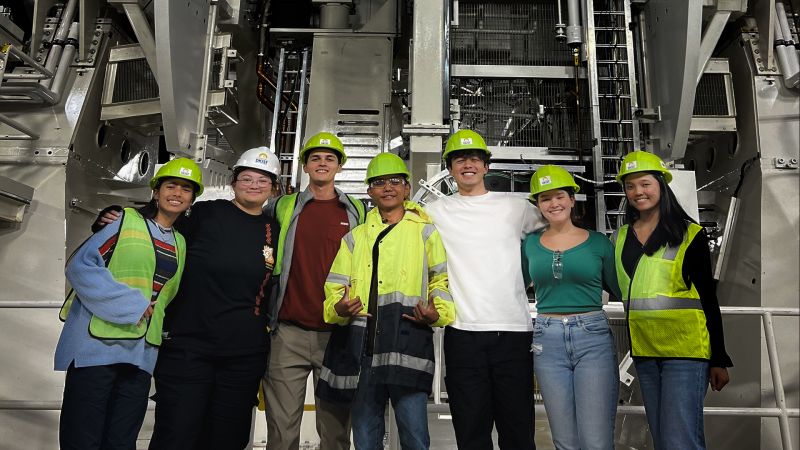Bridging the future: Defining and empowering the STEM workforce of tomorrow
The work landscape is changing rapidly, with advancements in science, technology, engineering and mathematics shaping the future of every industry. But what exactly does the "STEM workforce" mean in today's labor market, and how is this evolving concept influencing the preparations needed for students and professionals to thrive?
The STEM workforce: A critical asset in the labor market
In the broadest sense, the STEM workforce comprises individuals whose jobs require a high degree of knowledge and skills in science, technology, engineering and mathematics. As the STEM workforce evolves, it also encompasses not only traditional roles such as engineers, researchers and computer scientists but also professionals in emerging fields such as data analytics, artificial intelligence, cybersecurity and environmental sciences. The U.S. National Science Foundation expands the STEM workforce beyond just these technical fields and includes educators, policymakers and support staff who enable the critical systems and structures that allow science and technology to advance.
The STEM workforce is vital for driving innovation, economic growth, and national security. However industry and STEM leaders foresee a skills crisis in the labor market, which presents a risk to society's ability to keep up with technological advances and to address crucial global challenges. A growing concern exists in the industry that there is a disconnect between STEM academic programs curriculum and industry workforce needs. How can we develop lifelong learning and reskilling paths to address a labor skill shortage?
The evolving definition of the STEM workforce
Historically, the STEM workforce was associated with research, development and technical positions in manufacturing, aerospace and information technology. However, as scientific and technological advancements reshape industries, the definition of STEM work has expanded. The health care field now requires deep STEM expertise in biotechnology and bioinformatics. Environmental sustainability is driving new opportunities for engineers and scientists working on clean energy solutions. Moreover, with the rise of AI and machine learning (ML), even creative fields such as media and design are now becoming STEM-oriented.
Technological advances, including AI and ML, have significant implications for teaching, learning and skill-building across education and professional training environments. The traditional education model, which often emphasizes memorization and standardized testing, is no longer sufficient to prepare students for the dynamic and interdisciplinary demands of the modern STEM workforce. Instead, experiential learning, project-based education and cross-disciplinary collaboration are becoming essential.
Closing the skill gap: Innovative approaches and technologies
The question remains: How can we close the skill gap and ensure that more students are prepared for the growing demands for a skilled STEM workforce?
At the K-12 level, innovative approaches are already emerging. Robotics programs, coding camps and science competitions help spark interest in STEM subjects while developing critical skills from an early age. Gamification, augmented reality and virtual reality (VR) are transforming how students engage with complex topics, including chemistry, physics and biology. These innovative approaches make learning more immersive and help students grasp abstract concepts in ways that textbooks cannot.
In higher education and the workplace, micro-credentialing and digital badges are gaining traction as a means of validating skills in real time. Universities and employers are partnering to offer courses that align with current industry needs, allowing students and professionals to learn innovative technologies, such as AI or data science, in a practical, applied context. Industry, government and academia are finding paths to collaborate on programs that focus on problem-specific, immersive skill development.
Similarly, NSF-funded projects such as the Innovations in Graduate Education (NSF IGE) program are helping to rethink how to train the next generation of STEM professionals. NSF IGE funds initiatives that aim to incorporate interdisciplinary learning, real-world problem-solving and collaboration with industry partners into graduate STEM education. The IGE program strives to contribute to the development of a STEM workforce that is not only highly skilled but also adaptable and equipped to become leaders in solving crucial global challenges.
Industry and academia are embracing "blended learning" models that combine traditional academic instruction with direct work experience. These programs pair students with industry mentors, allowing them to gain practical skills while still in school. Additionally, a resurgence in apprenticeship programs gives students the opportunity to gain experience and build a portfolio of relevant work before they enter the job market.
Technology also plays a crucial role in bridging the skills gap in the STEM workforce. Important tools that help accelerate advanced continuous upskilling to the STEM workforce range from AI-powered learning platforms and VR to online collaboration environments, assisting workers to stay relevant in a fast-changing world. However, as supporting technology advances, collaboration across industry, academia and government remains crucial in STEM workforce upskilling. Figure 1 summarizes key collaboration opportunities.
Collaboration Category | Opportunities |
|---|---|
| 1. Bridge the gap between research and industry | Joint research and development programs, public-private partnerships and industry-sponsored research fellowships |
| 2. Integrate industry needs into educational curricula | Curriculum co-development, experiential learning and industry-led capstone projects |
| 3. Create innovation ecosystems | STEM hubs, accelerators and incubators, and collaborative research centers |
| 4. Develop continuous learning opportunities | Micro-credentialing, digital badging and cross-disciplinary programs |
| 5. Create sustainable talent pipelines | K-12 outreach programs, diversity and inclusion initiatives and STEM apprenticeships |
Figure 1. Upskilling of STEM workforce: Collaboration opportunities
The road ahead
Looking toward the future, the STEM workforce will continue to be a driving force behind innovation, economic growth and societal progress. But closing the skill gap requires a concerted effort from educators, employers and policymakers alike.
NSF, along with leading industry players and educational institutions, remains committed to supporting innovative, continuous learning initiatives that accelerate participation and upskilling of the STEM workforce. By leveraging technology, embracing new teaching approaches and fostering partnerships across academia, government and industry, society can ensure that the STEM workforce has the capabilities to meet the demands of today's job market and solve the world's most pressing challenges.
Additional resources
Celebrating women's participation in STEM: Breaking barriers and building futures.
Transforming Graduate Education in Transportation Engineering: Rowan University's bold initiative.
Creating the future through AI-powered STEM research at the University of Arizona.
Empowering tomorrow: NSF's role in advancing AI-Driven STEM research.


